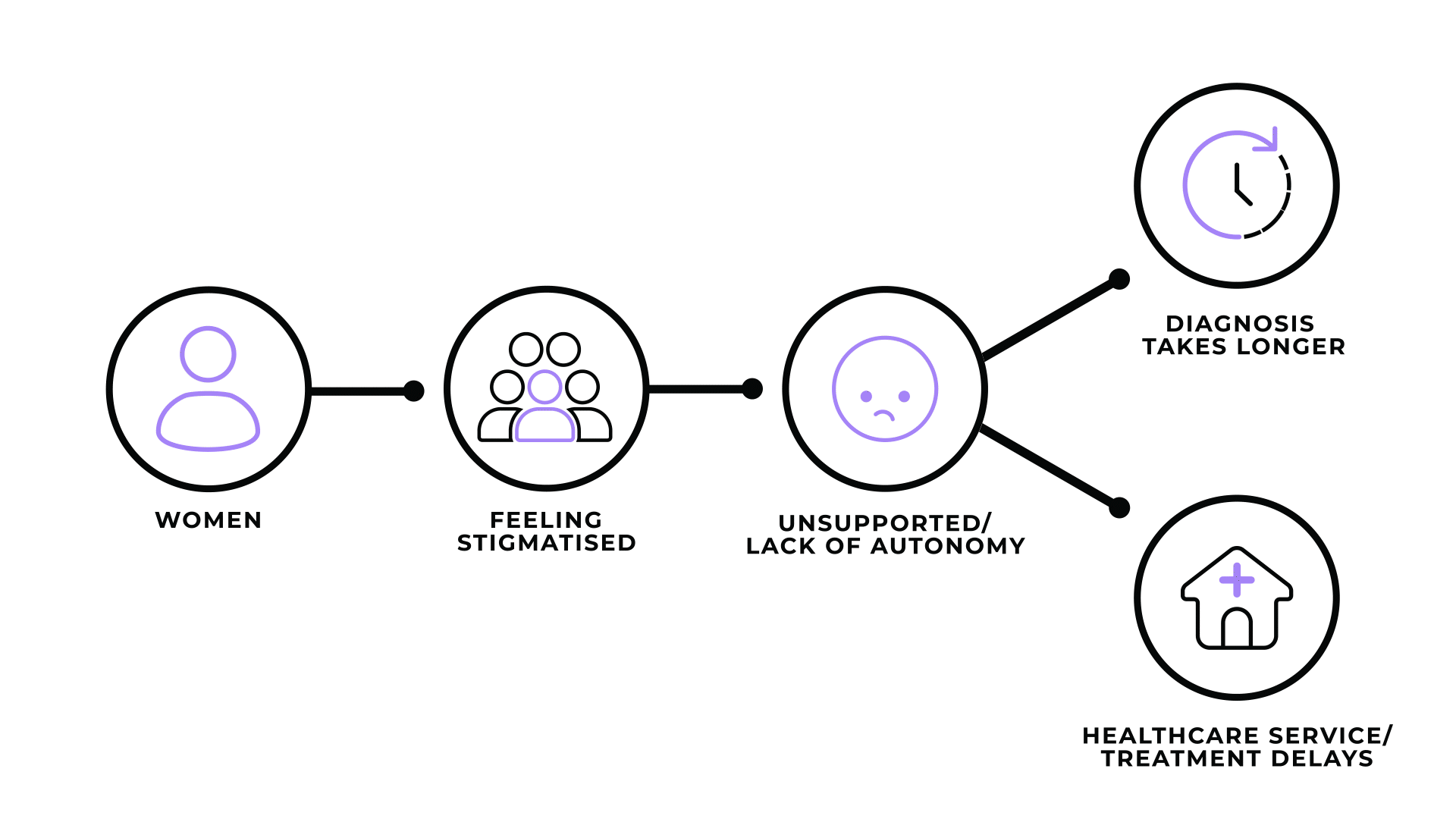“I wish doctors would be our partners in helping us, working as a team. I feel there is a divide between patient and doctor.”
The key to working as a team is to build a relationship with your patient that supports their autonomy and enables them to feel like an active player in healthcare decisions. This encourages them to be an ‘activated’ patient.
Research shows that autonomy supportive doctor-patient relationships lead to greater overall wellbeing, including reduced stress and anxiety for patients.¹⁻³ We found that the quality of this relationship also plays a role in how long it takes to get a diagnosis and receive treatment.⁴
TRUST can help you build an autonomy supportive relationship with your female patients. These tips are based on discussions with women with a chronic condition.
How TRUST can enable an autonomy supportive relationship
-
Review the patient’s medical history/notes: Before the appointment, gather as much information as you can about them and their condition and demonstrate that you are familiar with this in conversation. Are there outstanding questions from the last appointment?
Appreciate it is frustrating to tell the same story over and over again: Acknowledge this if you are one of many doctors they have seen about the same symptoms. Appreciate that they may be feeling jaded or demotivated.
Don’t just rely on the previous diagnosis: If symptoms have persisted, keep an open mind that they might have been previously misdiagnosed and explore other options.
Keep an open mind: Women who have lived with a painful or debilitating condition for a long time, can have developed masking or coping mechanisms which mean that they do not always look (especially to someone who does not see them daily) as though they are in the level of pain they are experiencing.
-
Really listen: Demonstrate this by giving the patient your full attention, probing further and using reflecting and paraphrasing to check you’ve understood.
Empathise, acknowledge and validate: This was one of the most common things that women wanted a doctor to do because it had such power to affect the conversation in a positive way. Showing empathy by validating a difficult experience instantly builds trust and shows the doctor is trying to get alongside the patient/relate to their experience.
See the person as an individual, not solely their symptoms: Health isn’t just biological but psychological, social, economic and holistic. Ask questions to put the symptoms in the context of someone’s life.
Give time within the 15 minutes: Open up space for the patient to raise other things that they are worried about or that they are thinking might be related by asking questions.
Useful language:
“I hear you”
“I hear that you’re experiencing…[insert patient symptom]”
“What else has been happening?”
“That sounds really hard”
“How has this impacted your life?”
“What else is going on in your life?”
“Do you have any other questions?”
“Is there anything else bothering you?“
“Is there anything else you would like to discuss?”
-
Appreciate expertise from lived experience: You bring clinical expertise, but the patient brings expertise from living a lifetime in their body – respect this.
Start from the position that what patients are telling you is true: Women often have to bring evidence or describe in detail how things had changed before they are believed.
Engage with any research or data that a patient brings: This shows the patient is invested in their healthcare. Use it as a conversation starter rather than dismissing it. If the source is not reliable, suggest other places where they can find information.
Treat it like an investigation: The starting point is the patient’s experiences but use your knowledge to delve deeper and open up other possibilities.
-
Explain your thinking at each stage: Give a rationale for why you are ordered these tests, what the options are, and what the next steps will be after the appointment so that patients can understand why.
Be as specific as possible: If watching and waiting is the recommended approach, can you give specific things to watch out for rather than simply saying “Just come back if it gets worse”?
Be honest about what might happen: Give people an idea of their future pathway, for example, if there is the possibility of a significant procedure - what would this entail and what is the realistic timeframe? This enables people to prepare mentally but also to plan any logistics required.
-
Provide options for next steps: Where possible, discuss what they mean and decide together which to take. Give people time to do their own research, talk to loved ones and come back to you with their decision.
Get on a waiting list as soon as possible: If the ultimate step is for the patient to be added to a waiting list for treatment, do this as soon as possible rather than waiting until you have exhausted all other options. To reduce the wait for the patient, these other options can be explored while they are on the waiting list. This will be particularly appreciated by people who have already spent a long time trying to get a diagnosis and/or treatment.
If you don’t know what the next steps should be, communicate this: At the same time, provide a route to find out more – such as you calling the patient back after doing some research, making a referral to a specialist or signposting to a specialist organisation.
The TRUST tips are designed by women with a chronic condition. To make them actionable, we also need input from doctors. Stay in touch to hear about ways to get involved.
https://neuroethics.med.ubc.ca/files/2013/06/Nagel-2013-Am-J-Bioeth.pdf
https://www.sciencedirect.com/science/article/pii/S1743919106000094
https://www.ncbi.nlm.nih.gov/pmc/articles/PMC3670438/
Frontera Group; Healthcare Women Article, June 2023 Download the full report here


